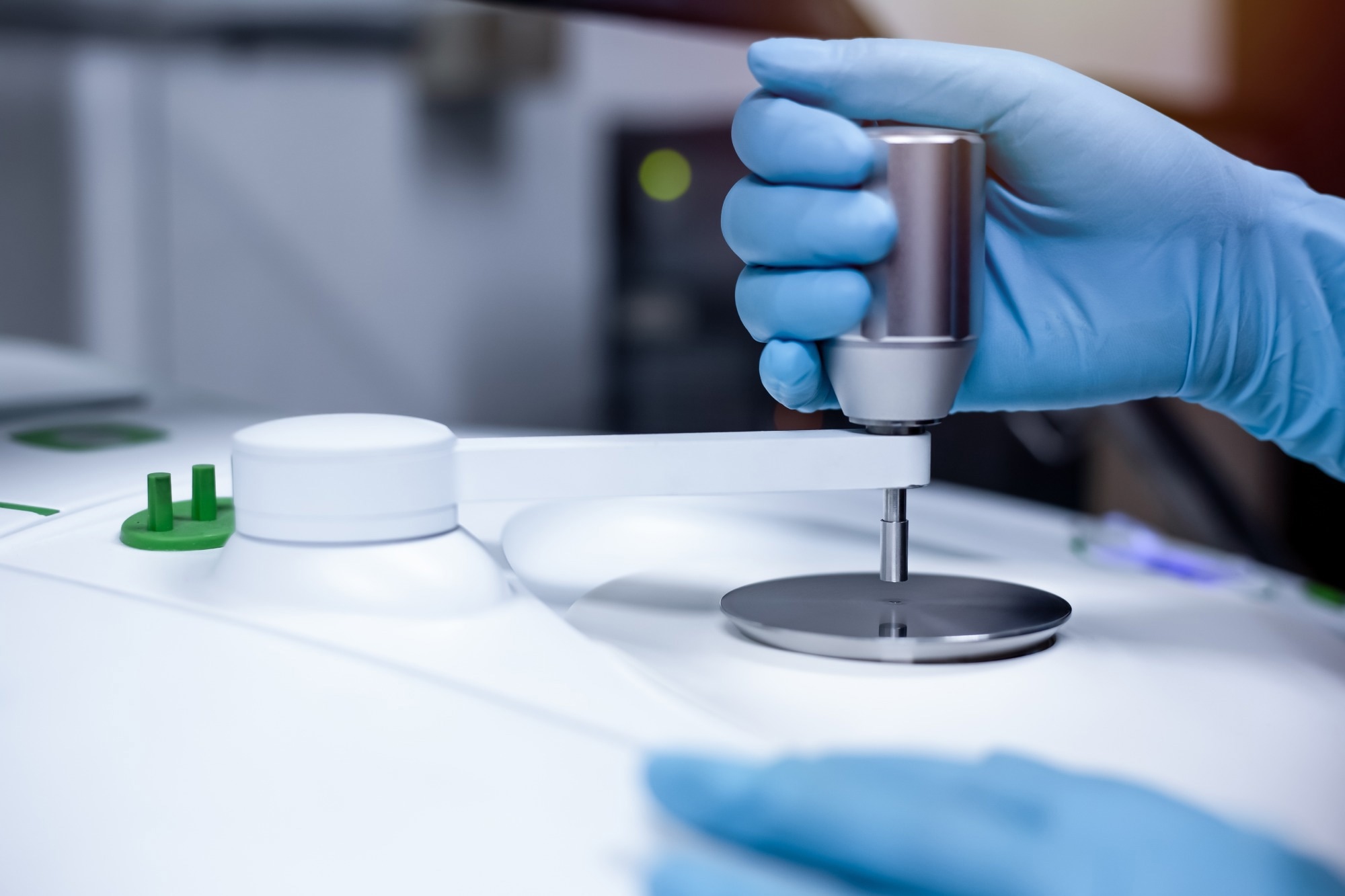In a recent Scientific Reports article, researchers presented a novel nanocomposite, arsenic (III) oxide iodide/polypyrrole intercalated with iodide ions (AsO2I/Ppy-I), which demonstrates exceptional properties for single photon detection.

Image Credit: S. Singha/Shutterstock.com
The increasing demand for advanced optoelectronic devices necessitates the development of materials that can efficiently absorb and manipulate light at the nanoscale. This research explores the unique morphological and optical characteristics of the AsO2I/Ppy-I nanocomposite, highlighting its potential applications in quantum technology and light-responsive devices.
Using Fourier-transform infrared (FTIR) spectroscopy, transmission electron microscopy (TEM), and scanning electron microscopy (SEM), they identified key functional groups and detailed the composite's unique morphology, confirming the successful integration of organic and inorganic components.
Optoelectronic Materials: An Overview
Background
The integration of organic and inorganic materials has gained significant attention in optoelectronics due to synergistic effects that enhance performance. Polypyrrole (Ppy), a conductive polymer, is known for its excellent electrical properties, while arsenic (III) oxide iodide (AsO2I) contributes to the optical characteristics of the composite.
This combination produces a nanocomposite that not only enhances light absorption but also facilitates efficient electron generation. The unique morphology of the AsO2I/Ppy-I nanocomposite, characterized by porous spherical particles and open structures, is crucial for optimizing photon interactions.
This study builds on previous research that has demonstrated the effectiveness of similar composites in enhancing the performance of photodetectors and other optoelectronic devices.
The Current Study
The synthesis of the AsO2I/Ppy-I nanocomposite involved a series of well-defined steps, including the preparation of individual components and their subsequent integration. Morphological characteristics were analyzed using transmission electron microscopy (TEM) and scanning electron microscopy (SEM), which provided insights into the size, shape, and structural features of the particles.
Optical properties were evaluated through Fourier-transform infrared spectroscopy (FTIR) and optical absorbance measurements, allowing for the identification of functional groups and the assessment of light absorption capabilities.
Theoretical modeling further clarified morphological characteristics and predicted nanocomposite behavior under various conditions. The nanocomposite's performance as a photodetector was assessed through sensitivity and efficiency measurements, comparing its performance with existing materials in the field.
Results and Discussion
The results revealed that the AsO2I/Ppy-I nanocomposite exhibits a distinctive morphology of open spherical particles approximately 900 nm in diameter with a wall thickness of around 250 nm. This structure significantly enhances the composite's photodetection capabilities by increasing the surface area for photon absorption.
TEM analysis showed contrasting shades, indicating open ball-like structures that facilitate light interaction. These structures allow photons to penetrate and become trapped within spherical voids, resulting in increased photon absorption.
Optical analysis revealed a significant enhancement in the optical behavior of the AsO2I/Ppy-I nanocomposite, due to the intricate interplay between its morphology and photon interactions. Its effective photon capture and manipulation make it a strong candidate for advanced optical applications.
Sensitivity measurements showed that the AsO2I/Ppy-I thin film photodetector achieved high efficiency, outperforming several previously reported materials. This enhanced performance is attributed to the nanocomposite’s unique structural arrangement, which optimizes photon management and manipulation.
The study also highlighted the significance of functional groups in the nanocomposite, as identified through FTIR analysis. Specific peaks corresponding to the Ppy ring structure and other functional groups confirm the successful integration of inorganic and organic components. Shifts in spectral bands during composite formation suggest strong molecular interactions, further enhancing the material's properties.
Conclusion
This research showcases the potential of the AsO2I/Ppy-I nanocomposite as a high-performance material for single photon detection and other optoelectronic applications. Its unique morphology, with open spherical particles, enhances light absorption and photon management. The synthesis and characterization of this nanocomposite support further investigation into its applications in quantum technologies.
The study provides insights into the behavior of the AsO2I/Ppy-I nanocomposite and underscores the value of integrating organic and inorganic materials to improve optoelectronic device performance. Future research could focus on optimizing synthesis and exploring additional applications in fields such as sensing, imaging, and communication technologies.
Journal Reference
Trabelsi ABG., et al. (2024). Satellite dish-like nanocomposite as a breakthrough in single photon detection for highly developed optoelectronic applications. Scientific Reports 14, 24471. DOI: 10.1038/s41598-024-75203-9, https://www.nature.com/articles/s41598-024-75203-9